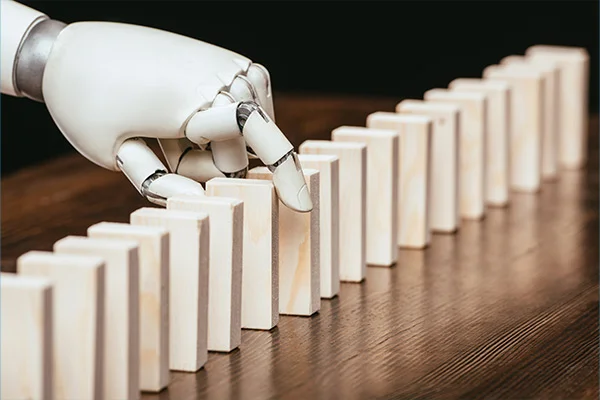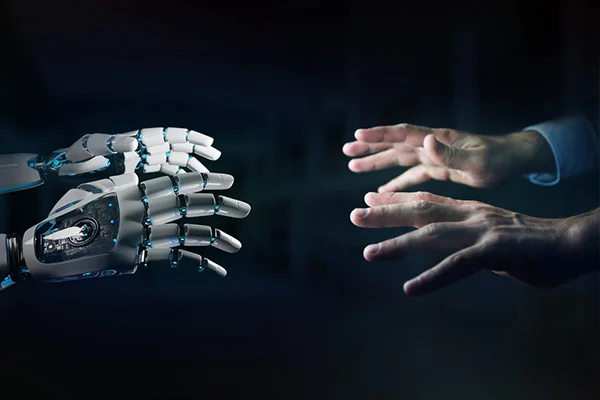AI-ML Intelligence and Learning
The emergence of Artificial Intelligence in recent years has shifted the dynamic of technology’s interaction and implementation in a way seldom seen. The fact that machines can think, analyze and operate like humans have been raising eyebrows since its inception. Artificial Intelligence, Machine Learning is deemed to be the most sought after field and career option in the coming decades. But what is so captivating about AI ML? What is it that sparked fears of AI ML taking over human labor? Inarguably, it is the essential attribute of AI – Intelligence and Learning. Intelligence Humans are the only species in the world whose intelligent quotient surpasses any other species by a wide margin. Whether due to evolution or otherworldly miracles, it is safe to say that humans stand at the top of the food chain and dominate the ecosystem like no other. This dominance can be credited to human intelligence. Although there is no definite description for intelligence, one of the greatest scientists of the 21st century, Stephen Hawking famously quoted, “Intelligence is the ability to adapt to change.” Intelligence can be thought of as an ability to acquire and apply knowledge or skills. The broad spectrum of intelligence covers abilities like understanding, logic, self-awareness, emotional experience, reasoning, planning, critical thinking and problem-solving. Although some of these abilities are found in every other animal species out there, humans surpass them by a long shot. So what is it that humans do differently and better than others. Here are a few examples: Learning Learning is an essential factor in the field of evolution. Without learning capability, humans would not make it this far. Most of the animal species have a distinct learning curve, which helped them overcome adversities and evolve accordingly. Learning is a process that causes “change” as a result of acquiring new or modifying existing knowledge, behaviors, skills, values, or preferences. Learning is very much intertwined with intelligence. Learning is an application of intelligence itself. Putting it simply, intelligence is the stirs the pot while learning is the taste of it and understanding what needs to be done. Here is how intelligence and learning interact with each other: Learning encompasses the following methodologies: Learning facilitates the prediction of data based on the understanding of the model and gathering actual observations. These observations are compared with the predicted outcomes to differentiate between the two sets. Approach to AI ML through Intelligence and Learning The conventional method of problem-solving through intelligence and learning covered a one-time pre-defined rigid model which, when running through the application, yields a definite result that couldn’t be processed any further. Such a method consists of strict one-way inputs which are mostly theoretical. This approach negates the learning process and presents a limited scope for refinement. The conventional means of that takes a lot of time and once completed, it can be considered done and dusted. The AI ML approach, however, takes a more flexible route as it enables the extraction of information from time to time, understanding the essence of information, and refine or adjust a model as per the findings. Such a method consists of various environmental inputs that might vary from time to time to draw several conclusions. The results are extracted to pull the absolute intrinsic or indispensable quality of something, which determines its character. AI ML approach to problem-solving facilitates adjustment of the model in accordance with its character to further run it through application again. Although AI ML has imitated human intelligence and learning capability to a reasonable extent, the game is far from over. Humans being complex creatures has a wide range of intelligence, namely Logical-mathematical, existential, interpersonal, linguistic, bodily-kinesthetic etc. Humans can also derive the meaning of cosmic entities far from the reach of an AI machine for now. It remains to be seen how far AI ML will go considering this is just the start.
Read MoreAI-ML Engineering Problems
Artificial Intelligence (AI), Machine Learning, and Deep Learning have been extensively used for more than a decade but largely remained confined to areas such as voice recognition, image reconstruction, image/signal processing, and output prediction. Such algorithms have seen limited usage in engineering domains such as thermal management, electronics cooling industries, fluid dynamics prediction inside the engine or over a bonnet, aerodynamics, and fluid dynamics problems across an aero-foil or turbine engine. The delicate relation between AI ML and engineering can be better explained with two specific terms – A priori knowledge and posteriori knowledge. Since the time of Emmanual Kent, western philosophy has defined A priori knowledge as something which is attained from reason and independent of particular experiences. On the contrary, posteriori knowledge is derived from real evidence that has to be considered authentic. It means A priori knowledge is not circumstance-centric but instead follows a set of pretty universal rules. Fundamental concepts of thermodynamics, electromagnetism, mechanical, and material properties are highly quantitative. They stick to a predetermined route rather than a vast stock of different scenarios. Engineering Problems Requirements Every problem related to engineering emphasizes the below-mentioned parameters: High Accuracy Levels – Every endeavor starts with a model in the early stages. The model undergoes various physical applications and virtual simulations. It is done to gather all sorts of data to determine the proposed workability of the model and improvise areas. The model goes through several stages of scrutiny until high accuracy levels are achieved. AI ML works more on input feeding, and the outputs fluctuate every given time. Function Over Feel – Engineering problems ask for the accurately intended functionality of a model. Feel of the component is never the priority. Every process applied to a model at every stage makes sure the intended functioning is obtained. As mentioned before, it is more linear. On the other hand, AI ML targets more on the feel, which varies with different situations. High Repeatability and Predictability – An engineering task involves a high repetition of activities and the desired outcome is already known. One cannot simply predict an AI ML output, and as a result, for a conventional model in engineering, AI ML is not suitable. However, recent years have witnessed increased usage of AI ML in the engineering sector, which is attributed to the following change in trends: Application of AI ML in Engineering Problems Although Artificial Intelligence has found its niche in the engineering sector, it is extensively found in four areas of operation, which have a massive importance in today’s market. Generative Design As the related data are available for every product released in the market, we have a readily available vast database to quickly conjure up past information and generate engineering data out of it. This makes the task more streamlined, so we can understand product requirements, highlight the recurrence of similar conditions in the past, and pull out past data that have previously catered to the same. This minimizes the time required to draw out an elaborate plan from scratch. If a problem is repetitive, it can be solved with the help of past data. This helps to intend to multiple issues simultaneously. Failure Analysis Failure Analysis is the collection of data and analysis to obtain the cause of a failure. Failure analysis is essential as it helps pinpoint the causes, reasons behind causes and pave a way to determine corrective actions or liabilities. A massive set of failure analysis records is fed to AI ML, which comes in handy during similar failures. AI ML can assess the loss and come back with valuable information, should the incident occurred in the past. Once again, it reduces detailed investigation and time. Digital Twins A significant aspect of AI, while digital twin has been around circa 2002, credit goes to the Internet of Things (IoT) for making it cost-effective to implement. It was named one of the top 10 technology trends for 2017, considering it is imperative to business. The digital twin is a virtual, digital replica of a real-world entity or process. The intelligent components are integrated into a physical element to gather data such as working conditions, position, and process changes. The compiled data is collected, synthesized, and integrated into a virtual model and AI algorithms. Such data assets can be created even before the physical model is built. Applying analytics into these virtual models can give back relevant insights about the real-world asset. The best part of the digital twin is that once the physical and the virtual models are integrated, the virtual model can sync with the actual model. Digital Inspection The digital inspection involves collecting information and analysis of products on production to ensure quality control. The operation of digital inspection has gained considerable momentum in engineering, especially in the manufacturing sector. Unlike paper inspections which could have been laced with occasional errors, digital inspection minimizes or completely obliterates the chances of mistakes. AI ML has made its way to production and manufacturing, consequently providing automation that is faster, cost-effective, and superior to human involvement. AI-infused digital inspections build intelligent systems that perform quality checks down to the finest of details, leaving no stones unturned. The rise of artificial intelligence has allowed automated machines to develop complicated manufacturing and design operations. AI has found significant importance in: The end goal is to introduce machines capable of learning, exploring, probing, and improving without human intervention. AI ML and Big Data are climbing the ladders of engineering with pace. An interesting point to bring up is that in our pursuit of creating supreme AIs, we are unwrapping information about how human brains perceive & operate and how we address the learning process, both consciously and unconsciously.
Read More
